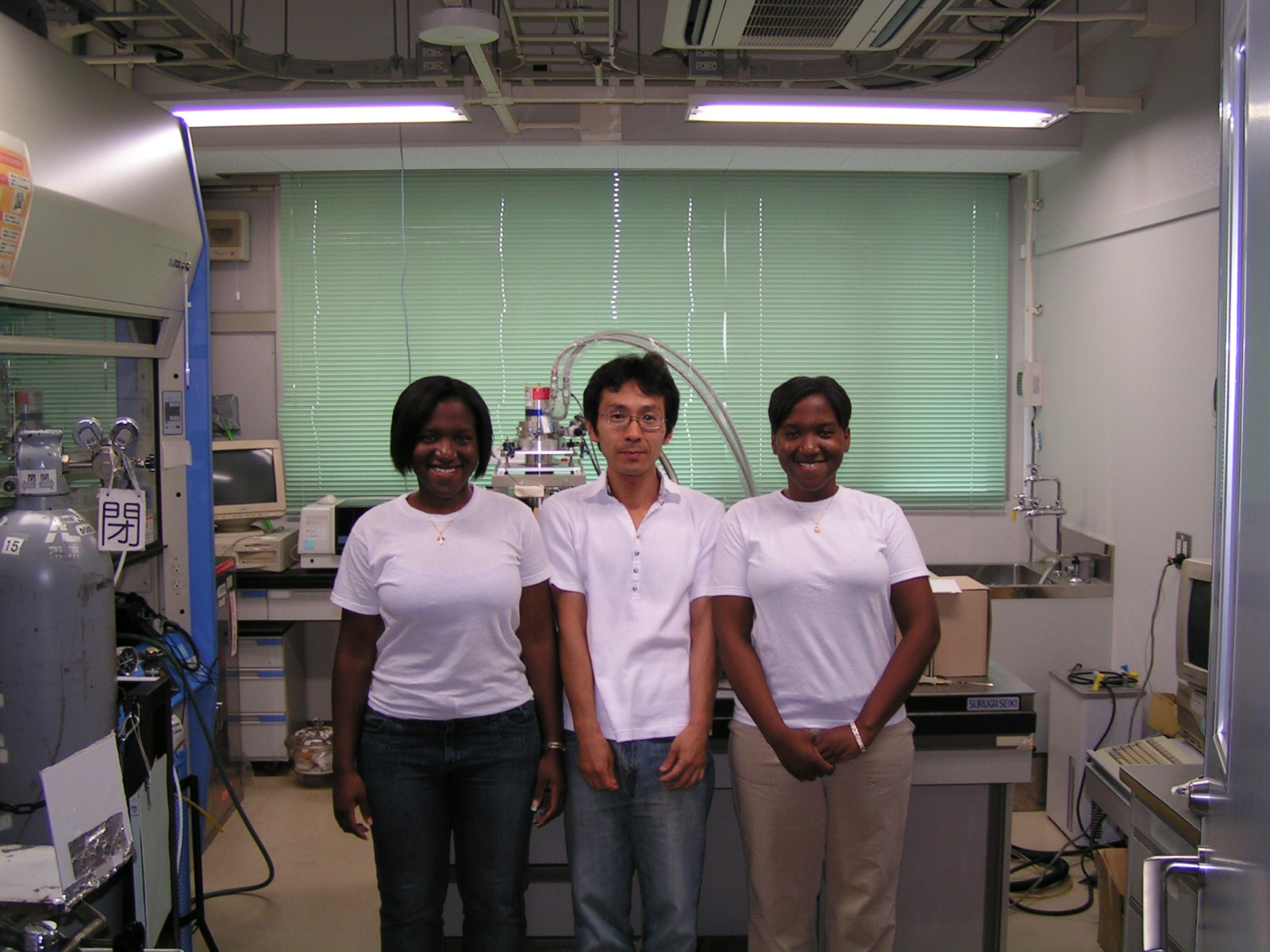
ACS PRF | ACS
All e-Annual Reports

44566-B4
Luminescence and Photodegradation of Polymer-Dispersed Near-Infrared Ionic Dyes
Chaevia Clendiinen and Chaevien Clendinen carried out energy transfer and photodegradation studies of Perylene Red in the presence of HITC and DTTC in the laboratory of Wade Sisk at UNC Charlotte and in the laboratory of Dr. Nobuaki Tanaka at Shinshu University in Japan. Thin film polymer-dispersed dye samples were prepared in Sisk's laboratory by spin casting dye/PMMA/chloroform solutions onto glass microscope slides. These films were characterized by measuring the absorbance in a UV-visible absorption spectrophotometer and shipped to Dr. Tanaka's laboratory in Japan approximately one month prior to traveling to Japan. A few photodegradation studies were also carried out on copies of the samples shipped to Japan for comparison with film photodegradation results obtained in Dr. Tanaka's laboratory. A dramatic enhancement of near-IR fluorescence of HITC (DTTC) was observed upon the addition of Perylene Red to PMMA films containing HITC (DTTC) following 532 nm irradiation. This enhancement of near-IR fluorescence and the accompanying decrease in Perylene Red fluorescence can be attributed to efficient energy transfer from Perylene Red to HITC (DTTC). A further manifestation of this energy transfer is the observation of an initial rise of Perylene Red emission with cumulative 532 nm laser pulses of the Perylene Red/PMMA films containing HITC (DTTC), due to the rapid photodegradation of HITC and DTTC, Perylene Red fluorescence quenchers. The similarity of the decrease in fluorescence with laser irradiation under both vacuum and ambient conditions and the large recovery of fluorescence intensity upon air exposure of evacuated irradiated HITC/PMMA films suggests that HITC photodegradation is partially attributed to reversible photoreduction. The slow decrease of HITC IR fluorescence bodes well for a future fabrication of an infrared emitting energy transfer dye laser based on HITC and Perylene Red. This work should impact the research and development of viable energy transfer solid-state dye lasers. Impact on career of grant recipient (sisk) This ACS-PRF grant has allowed me to continue studies on energy transfer solid-state dye lasers. I solidified my ties with my colleague, Dr. Nobuaki Tanaka, by sending my students to Japan to work in his laboratory. I also came to better understand the challenges of sending students Japan to carry out research. This is very important to me, since I plan to continue sending students to Japan in the future. Impact on the students who participated in the project. The research experience in Nagano, Japan taught us a lot about team work. We have found that our team working skills have improved dramatically since Japan. It was a relief to know that there are people all over the world that are interested in the same field and research that we are. This has broadened our perspective on scientific research, knowing that it surpasses all cultural boundaries. Performing the experiments and doing the calculations, of which Dr. Tanaka assisted us, built our understanding of higher and lower levels of chemistry. In Japan, we learned the importance of an independent research experience. We know that this research knowledge gained will help us in other areas were we will be required to do independent research. Though English was not spoken well, we were able to understand the Japanese professors and students through science. It has peeked our interest in chemistry, specifically photochemistry and our understanding in laser dye photo-stability. We are planning a medical career and are currently pre-med students at the University of North Carolina at Charlotte. We thank the ACS grant for granting us the opportunity as we have truly learned the dependence and importance of the photo-stability of laser dyes in many medical instruments and procedures. – Chaevia and Chaevien Clendinen Dr. Nobuaki Tanaka (center) with Chaevia and Chaevien Clendinen.
